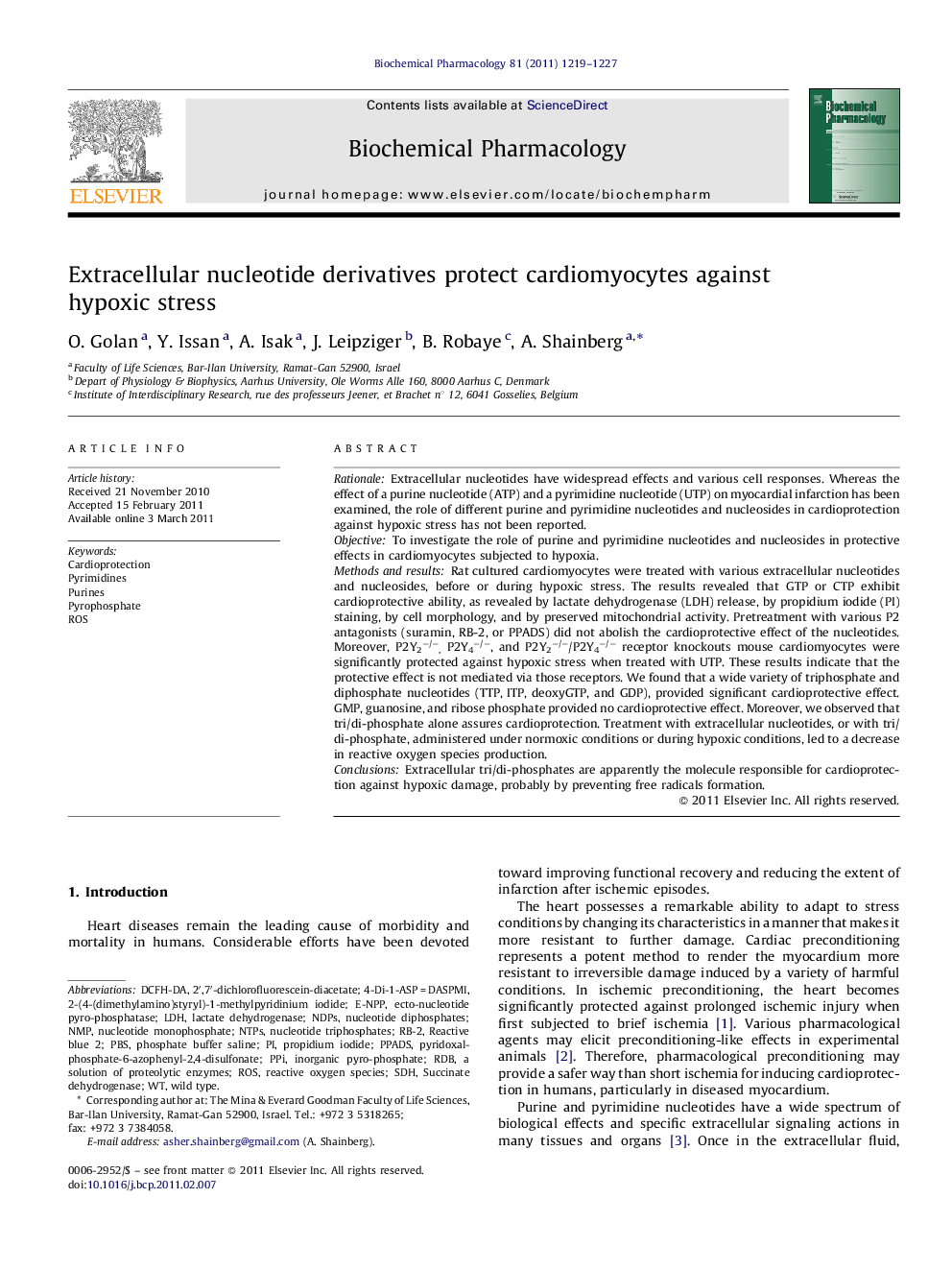| کد مقاله | کد نشریه | سال انتشار | مقاله انگلیسی | نسخه تمام متن |
|---|---|---|---|---|
| 2512947 | 1118385 | 2011 | 9 صفحه PDF | دانلود رایگان |

RationaleExtracellular nucleotides have widespread effects and various cell responses. Whereas the effect of a purine nucleotide (ATP) and a pyrimidine nucleotide (UTP) on myocardial infarction has been examined, the role of different purine and pyrimidine nucleotides and nucleosides in cardioprotection against hypoxic stress has not been reported.ObjectiveTo investigate the role of purine and pyrimidine nucleotides and nucleosides in protective effects in cardiomyocytes subjected to hypoxia.Methods and resultsRat cultured cardiomyocytes were treated with various extracellular nucleotides and nucleosides, before or during hypoxic stress. The results revealed that GTP or CTP exhibit cardioprotective ability, as revealed by lactate dehydrogenase (LDH) release, by propidium iodide (PI) staining, by cell morphology, and by preserved mitochondrial activity. Pretreatment with various P2 antagonists (suramin, RB-2, or PPADS) did not abolish the cardioprotective effect of the nucleotides. Moreover, P2Y2−/−, P2Y4−/−, and P2Y2−/−/P2Y4−/− receptor knockouts mouse cardiomyocytes were significantly protected against hypoxic stress when treated with UTP. These results indicate that the protective effect is not mediated via those receptors. We found that a wide variety of triphosphate and diphosphate nucleotides (TTP, ITP, deoxyGTP, and GDP), provided significant cardioprotective effect. GMP, guanosine, and ribose phosphate provided no cardioprotective effect. Moreover, we observed that tri/di-phosphate alone assures cardioprotection. Treatment with extracellular nucleotides, or with tri/di-phosphate, administered under normoxic conditions or during hypoxic conditions, led to a decrease in reactive oxygen species production.ConclusionsExtracellular tri/di-phosphates are apparently the molecule responsible for cardioprotection against hypoxic damage, probably by preventing free radicals formation.
Hypoxia causes cardiac cell damage. Extracellular nucleotides derivatives or di/triphosphate protects the cardiomyocytes from hypoxic damage.Figure optionsDownload as PowerPoint slide
Journal: Biochemical Pharmacology - Volume 81, Issue 10, 15 May 2011, Pages 1219–1227